
The Legion of Merit (LOM) is a military award of the United States Armed Forces that is given for exceptionally meritorious conduct in the performance of outstanding services and achievements. The decoration is issued to members of the eight uniformed services of the United States as well as to military and political figures of foreign governments.
The Presidential Medal of Freedom is the highest civilian award of the United States, alongside the Congressional Gold Medal. It is an award bestowed by decision of the president of the United States to recognize people who have made "an especially meritorious contribution to the security or national interests of the United States, world peace, cultural or other significant public or private endeavors". The award is not limited to U.S. citizens, and, while it is a civilian award, it can also be awarded to military personnel and worn on the uniform. It was established in 1963 by President John F. Kennedy, superseding the Medal of Freedom that was initially established by President Harry S. Truman in 1945 to honor civilian service.
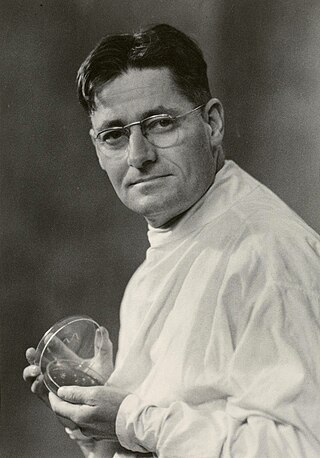
Howard Walter Florey, Baron Florey, was an Australian pharmacologist and pathologist who shared the Nobel Prize in Physiology or Medicine in 1945 with Ernst Chain and Sir Alexander Fleming for his role in the development of penicillin.

The United States secretary of defense (SecDef) is the head of the United States Department of Defense, the executive department of the U.S. Armed Forces, and is a high-ranking member of the federal cabinet. The secretary of defense's position of command and authority over the military is second only to that of the president of the United States, who is the commander-in-chief. This position corresponds to what is generally known as a defense minister in many other countries. The secretary of defense is appointed by the president with the advice and consent of the Senate, and is by custom a member of the Cabinet and by law a member of the National Security Council.

The National Security Medal is a decoration of the United States of America officially established by President Harry S. Truman in Executive Order 10431 of January 19, 1953. The medal was originally awarded to any person, without regard to nationality, for distinguished achievement or outstanding contribution on or after July 26, 1947, in the field of intelligence relating to the national security of the United States.

Tracy Stebbins Voorhees served as Under Secretary of the United States Army from August 1949 to April 1950. He held numerous positions within the U.S. Government as a civilian. A practicing attorney, Voorhees, with the Judge Advocate General's Department, he served as part of the Surgeon General's office in the European and Pacific theatres during World War II. After the War, he served in various positions in the Defense Department.
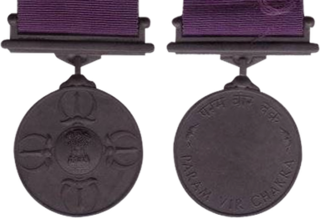
The Param Vir Chakra (PVC) is India's highest military decoration, awarded for displaying distinguished acts of valour during wartime. Param Vir Chakra translates as the "Supreme Wheel of Bravery", and the award is granted for "most conspicuous bravery in the presence of the enemy". As of January 2018, the medal has been awarded 21 times, of which 14 were posthumous and 16 arose from actions in Indo-Pakistani conflicts. Of the 21 awardees, 20 have been from the Indian Army and one has been from the Indian Air Force. Major Somnath Sharma was the first recipient. A number of state governments of India as well as ministries of the central government provide allowances and rewards to recipients of the PVC.
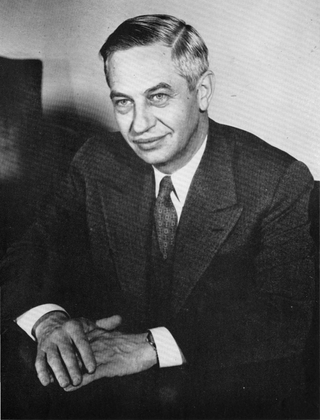
Lee Alvin DuBridge was an American educator and physicist, best known as president of the California Institute of Technology from 1946–1969.
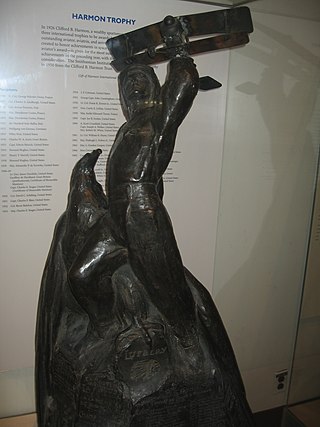
The Harmon Trophy is a set of three international trophies, to be awarded annually to the world's outstanding aviator, aviatrix, and aeronaut. A fourth trophy, the "National Trophy," was awarded from 1926 through 1938 to the most outstanding aviator in each of the twenty-one member countries and again from 1946–1948 to honor Americans who contributed to aviation. The award was established in 1926 by Clifford B. Harmon, a wealthy balloonist and aviator.
The President's Certificate of Merit was created June 6, 1946 by Executive Order 9734 signed by US President Harry Truman, "for award by the President or at his direction to any civilian who on or after December 7, 1941, has performed a meritorious act or service which has aided the United States or any nation engaged with the United States in the prosecution of World War II, and for which there is no other suitable award or recognition."
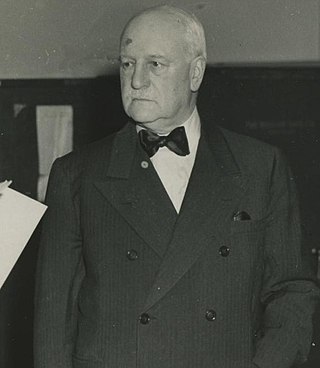
Edgar Edouard Bernard Sengier was a Belgian mining engineer and director of the Union Minière du Haut Katanga mining company that operated in Belgian Congo during World War II.

Barbara Jean Stephenson is an American diplomat and university official. Stephenson served as president of the American Foreign Service Association from 2015 to 2019. She was formerly the Dean of the Leadership and Management School of the Foreign Service Institute in Arlington, Virginia. Formerly, she was Deputy Chief of Mission at the US Embassy in London, and acted as Chargé d'Affaires following the departure of Ambassador Louis Susman. She is the former United States Ambassador to the Republic of Panama. She was confirmed by the U.S. Senate and was appointed by President Barack Obama in the Summer of 2010.

Thomas James Hamilton was an American football player, coach, college athletics administrator, and naval aviator who rose to the rank of rear admiral in the United States Navy. He was the head coach at the United States Naval Academy from 1934 to 1936 and again from 1946 to 1947 and at the University of Pittsburgh in 1951 and 1954, compiling a career college football record of 28–32–1.
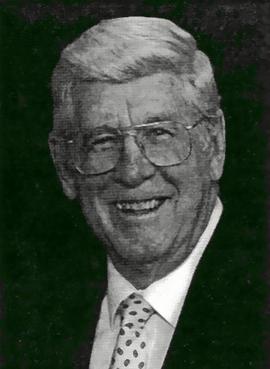
Enno Henry Knoche was an American intelligence officer who served as deputy director of the CIA and acting Director of Central Intelligence.

John George Trump was an American electrical engineer, inventor and physicist. A professor at the Massachusetts Institute of Technology (MIT) from 1936 to 1973, he was a recipient of the National Medal of Science and a member of the National Academy of Engineering. Trump was noted for developing rotational radiation therapy. Together with Robert J. Van de Graaff, he developed one of the first million-volt X-ray generators. He is the uncle of Donald Trump.

The Medal of Honor (MOH) is the United States Armed Forces' highest military decoration and is awarded to recognize American soldiers, sailors, marines, airmen, guardians, and coast guardsmen who have distinguished themselves by acts of valor. The medal is normally awarded by the President of the United States and is presented "in the name of the United States Congress." It is often, not strictly correctly, referred to as the Congressional Medal of Honor.















